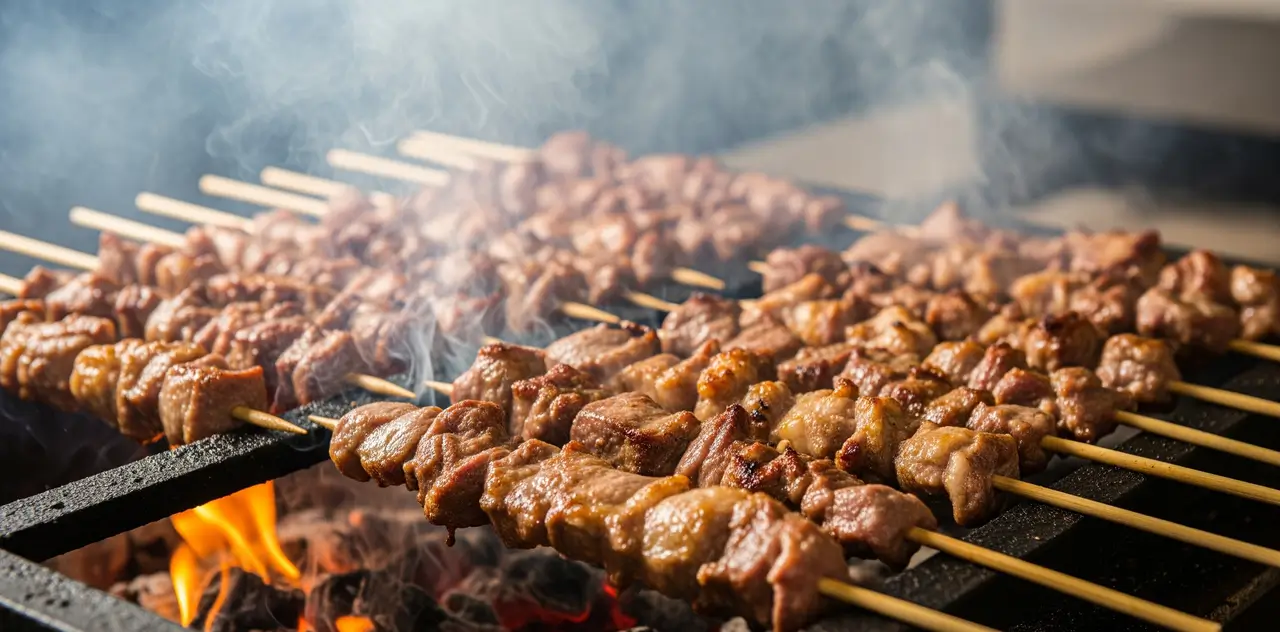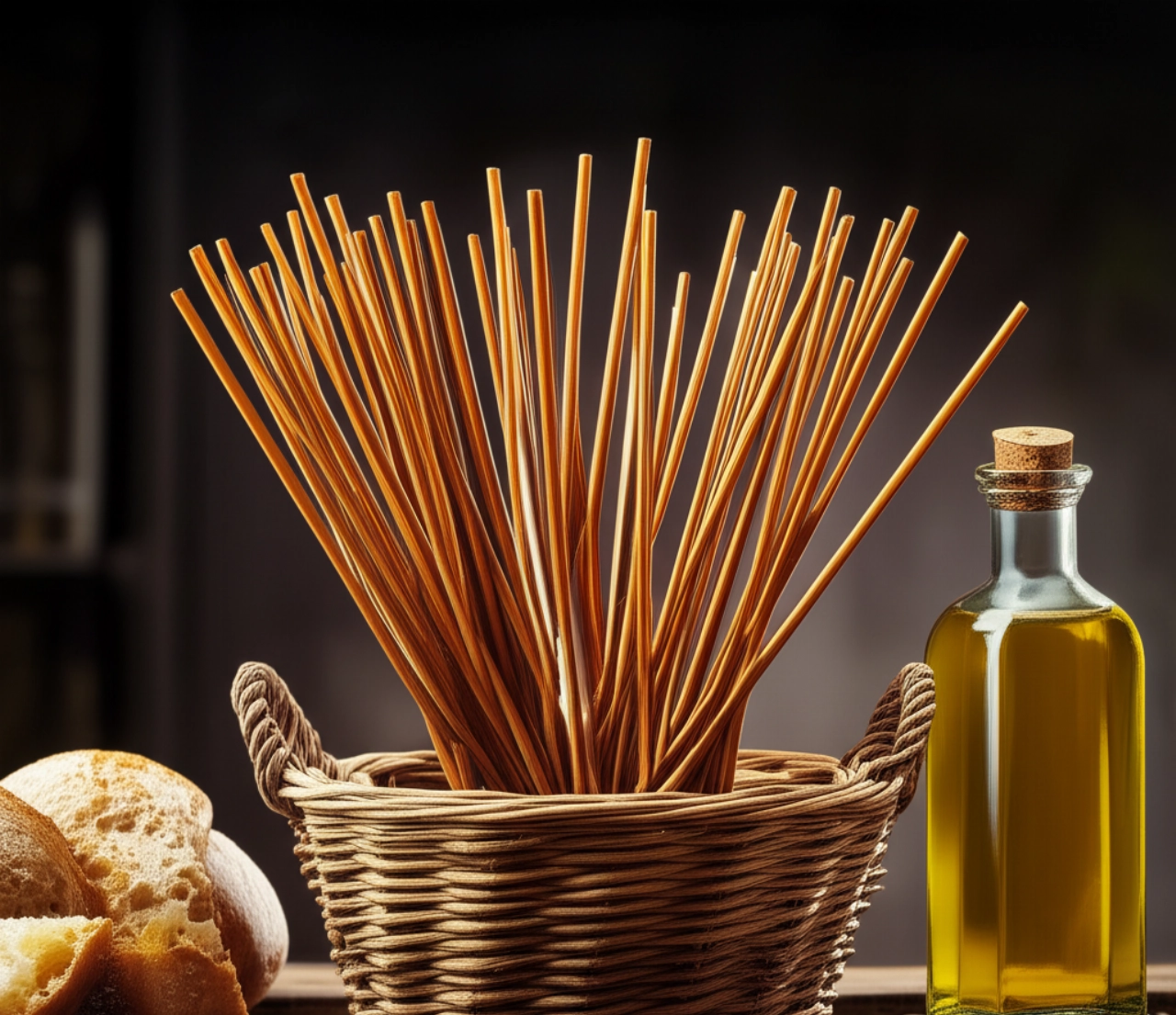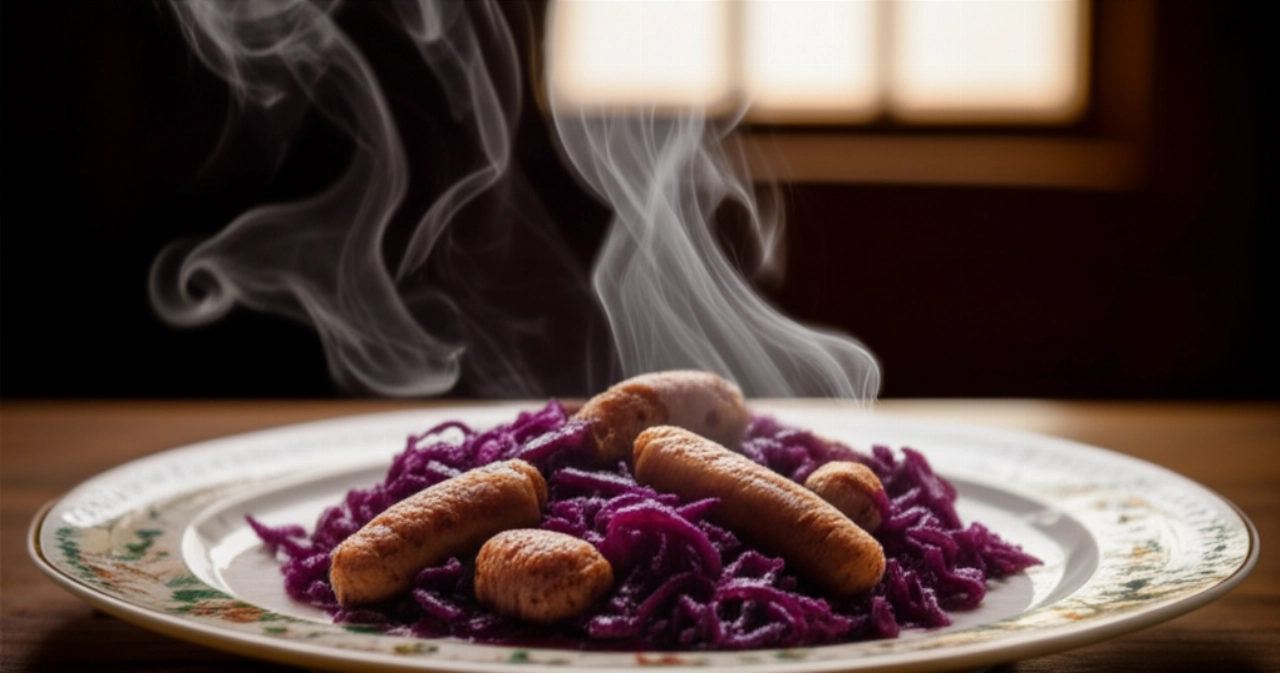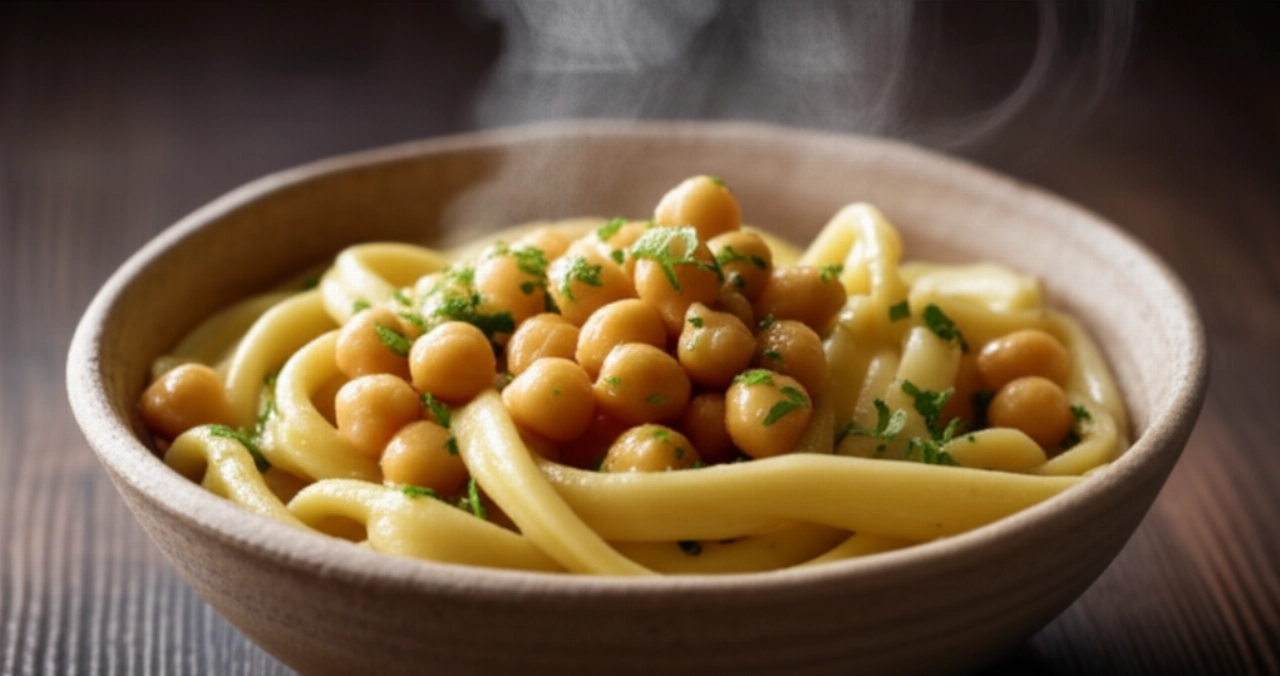Dreaming of bringing the unmistakable aroma of Abruzzese Arrosticini to your table, with that tender meat that melts in your mouth and that irresistible crust? Can you already imagine your guests exclaiming 'Wow, these are like the real thing!'?
But how many times have you tried to make them at home, only to get a disappointing result? Maybe too dry, tough, or worse, burnt on the outside and raw on the inside. Finding the right recipe, one that guarantees success and authentic flavor, seems like a challenge.
Make yourself comfortable. Here at Search Recipes, your trusted chef grandma is ready to reveal all the secrets. On this page, you won't just find a list of ingredients, but a step-by-step guide, full of tricks and practical tips, to prepare the juiciest and most flavorful Abruzzese Arrosticini you've ever tasted. Success is guaranteed, and the taste of home will envelop you.

Smart Ingredients: The Choice That Makes the Difference
To get Arrosticini that truly make a difference, the quality of the ingredients is fundamental. It's not just about meat, but the right meat and the right cut. Here's what you need and why:
- Sheep meat (or lamb): The heart of Arrosticini. Tradition calls for adult sheep meat, which has a more intense and characteristic flavor. If you can't find it, good lamb is an excellent alternative. The important thing is that it's a mixed cut, with a good percentage of fat. It's precisely that fat, melting during cooking, that will make the arrosticini incredibly juicy and flavorful. Ask your trusted butcher for a cut suitable for skewers, perhaps from the thigh or shoulder, with the right marbling.
- Salt and Pepper: Simplicity is key. Good fine or coarse salt and freshly ground black pepper are all you need to enhance the meat's flavor. No complex marinades that would cover the authentic taste!
- Wooden skewers: Thin ones, 20-25 cm. If you use them, remember to soak them in water for at least 30 minutes before skewering the meat. This will prevent them from burning on the grill.
- Extra virgin olive oil (optional): A drizzle of quality oil can help brush the arrosticini before cooking, for a more uniform browning and to prevent sticking. But it's not strictly necessary if the meat is well marbled.

Mistakes to Avoid: Secrets for Perfect Arrosticini
Preparing Arrosticini seems simple, but there are pitfalls that can ruin the result. Your chef grandma reveals the most common mistakes and how to avoid them, to guarantee you a sensational success:
- Cutting the meat into pieces that are too large or too small: The cubes should be about 1 cm per side. If they are too large, they won't cook evenly and the inside will remain raw. If too small, they will dry out in an instant. The perfect size ensures homogeneous cooking and ideal succulence.
- Not alternating lean and fatty meat: The secret to the tenderness and flavor of Arrosticini is precisely the balance between the lean and fatty parts. Skewer the cubes by alternating them, so that the fat melts and bastes the meat during cooking, making it tender and flavorful.
- Cooking them for too long or over too high heat: This is the fatal error that makes Arrosticini dry and tough. Cooking must be fast and over a lively flame, but not excessive. The goal is a nice external browning and a juicy interior. Never abandon them on the grill!
- Not using a "fornacella" (or a valid alternative): The "fornacella", or 'rustillire', is the traditional Abruzzese grill, narrow and long, perfect for cooking Arrosticini while leaving the wooden sticks out. If you don't have one, a grill with a slot or a charcoal grill with a less hot area for the sticks is essential to avoid burning the skewers.

The Extra Touch: My Grandma's Infallible Arrosticini Tip
My grandma, the queen of the grill, had a trick few know to make Arrosticini even more special. It wasn't about secret ingredients, but a gesture of love and attention:
«My dear,» she would tell me, «before putting the arrosticini on the grill, quickly pass them over a cutting board where you've spread a drizzle of oil and a pinch of coarse salt. Don't soak them, just a gentle touch. This will help them create a perfect crust and prevent sticking, keeping all their juiciness inside.» A simple, almost imperceptible gesture, but one that makes the difference between a good arrosticino and a memorable arrosticino.
Let's Prepare Abruzzese Arrosticini Together: The Step-by-Step Guide
Ingredients:
- 1 kg of sheep meat (or lamb) with a good percentage of fat, cut into cubes of about 1 cm
- Fine salt to taste
- Freshly ground black pepper to taste
- Wooden skewers (if using, soak them in water for 30 minutes)
Tools:
- Sharp knife
- Cutting board
- Grill (ideally a "fornacella" or a charcoal grill)
- Kitchen tongs
Procedure:
- Prepare the meat: If the meat is not already cut into 1 cm cubes, do it yourself. Make sure to alternate lean meat pieces with small pieces of fat. This is crucial for the final succulence.
- Skewer the arrosticini: Take a skewer and start threading the meat cubes, alternating lean and fat. Don't press the meat too tightly; leave it slightly loose on the skewer. Each skewer should contain about 10-12 cubes, depending on their size and the length of the skewer. Leave some space at the ends for handling.
- Salt and pepper: Arrange the arrosticini on a tray and generously salt and pepper all sides. Don't be afraid with the salt; sheep meat handles it well. You can also add a drizzle of oil as suggested by grandma, brushing lightly.
- Prepare the grill: This is the most important step for cooking. Light the charcoal and let it burn until a nice glowing ember bed forms, with a light layer of white ash. The temperature must be high but uniform. If using a gas grill, preheat it to high temperature.
- Cook the arrosticini: Place the arrosticini on the hot grill. If you have a "fornacella", position them so that the sticks remain outside the embers. Cook them for a few minutes per side, turning them often with tongs. The goal is to achieve a nice external browning and an interior that is still pink and juicy. Do not overcook them! Usually, 2-3 minutes per side are enough, depending on the intensity of the embers.
- Serve immediately: Arrosticini should be enjoyed piping hot, straight from the grill. Serve them on a platter, perhaps accompanied by good homemade bread and a glass of Montepulciano d'Abruzzo. Tradition dictates that they be eaten directly from the skewer, sliding the meat off with your teeth.
Tips and Frequently Asked Questions about Arrosticini
Still have some doubts? Don't worry, it's normal! Here are the answers to the most frequently asked questions to guarantee you an impeccable result:
Can I use only lamb meat?
Of course! If sheep meat is difficult to find or you prefer a more delicate flavor, lamb is an excellent alternative. The important thing is that it's a cut with the right percentage of fat to maintain succulence.
What if I don't have a "fornacella"?
No problem! You can use a regular charcoal or gas grill. The important thing is to find a way to prevent the wooden sticks from burning. You can position them so that the sticks protrude from the sides of the grill, or wrap the ends with aluminum foil. The important thing is that the meat is in direct contact with the heat.
Can I prepare them in advance?
You can skewer the arrosticini a few hours in advance and store them in the refrigerator, covered with plastic wrap. It's best to salt and pepper them just before cooking to prevent the meat from releasing too much water and drying out.
Why did my arrosticini become tough?
Most likely, you cooked them for too long or at too low a temperature. Arrosticini require quick and intense cooking. If the embers are not hot enough, the meat cooks slowly and dries out. Remember: a few minutes per side, turning them often!
What's the ideal side dish?
Traditionally, Arrosticini are enjoyed on their own, accompanied only by homemade bread and a drizzle of extra virgin olive oil. If you really want a side dish, opt for something light that doesn't overpower the meat's flavor, such as a simple green salad or roasted potatoes Crispy Roasted Potatoes.
There you have it! Now you don't just have a recipe, but all the secrets to bring a piece of Abruzzo to your table, a dish that tastes of tradition, conviviality, and love for simple but extraordinary things.
Don't be afraid to light the grill. Cooking is a gesture of generosity and creativity. But start with this solid foundation, and you'll see that applause won't be lacking, and your Arrosticini will be the star of the table!
Have you tried our recipe? We're very curious to see your masterpiece! Leave a comment below, tell us how it went, or share a photo on Instagram by tagging @CercaRicette.it. If you loved these Arrosticini, you can't miss our recipe for Amatriciana Sauce or for a perfect first course like Pasta alla Pecorara.





